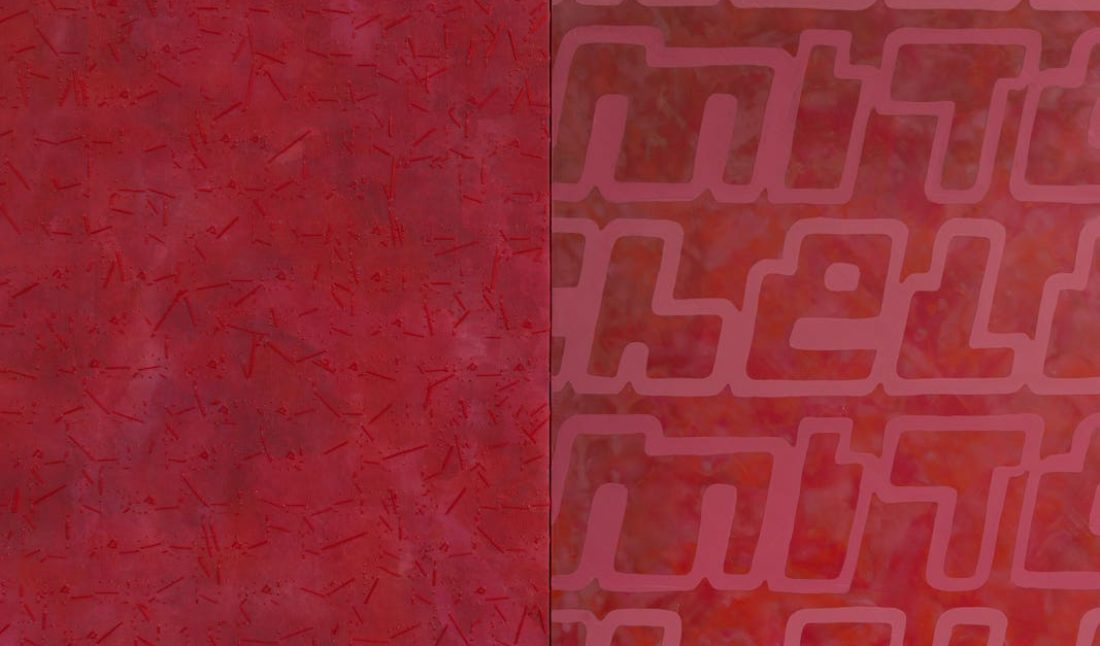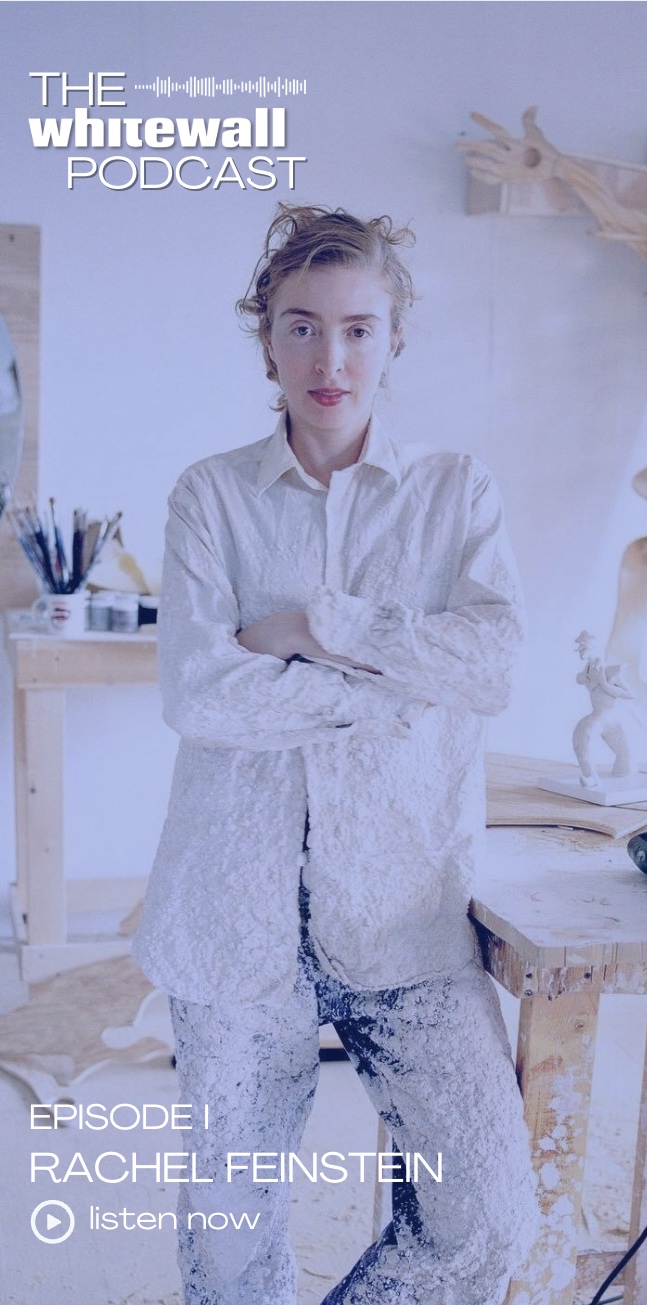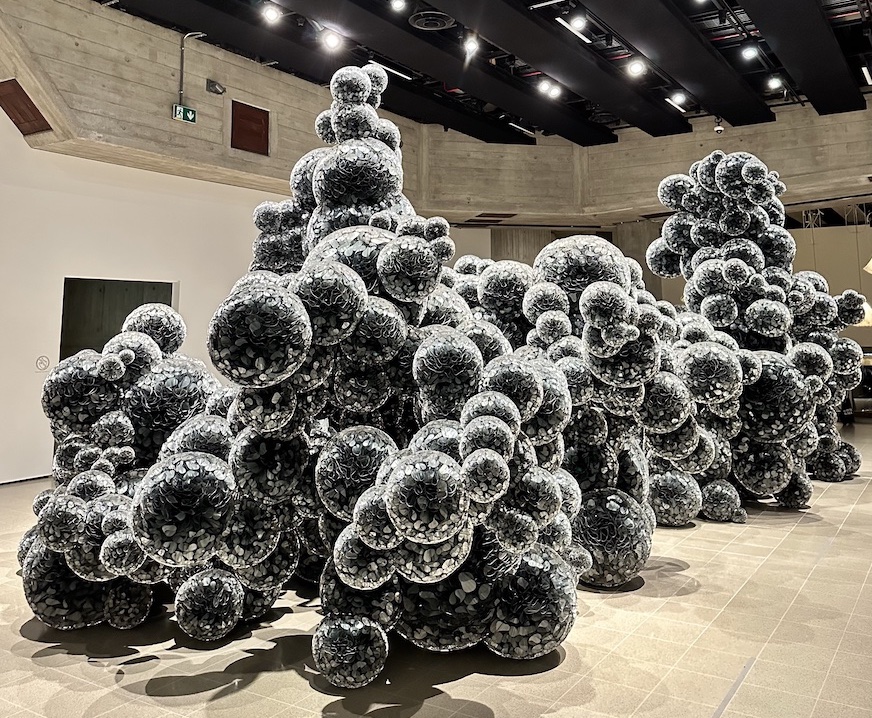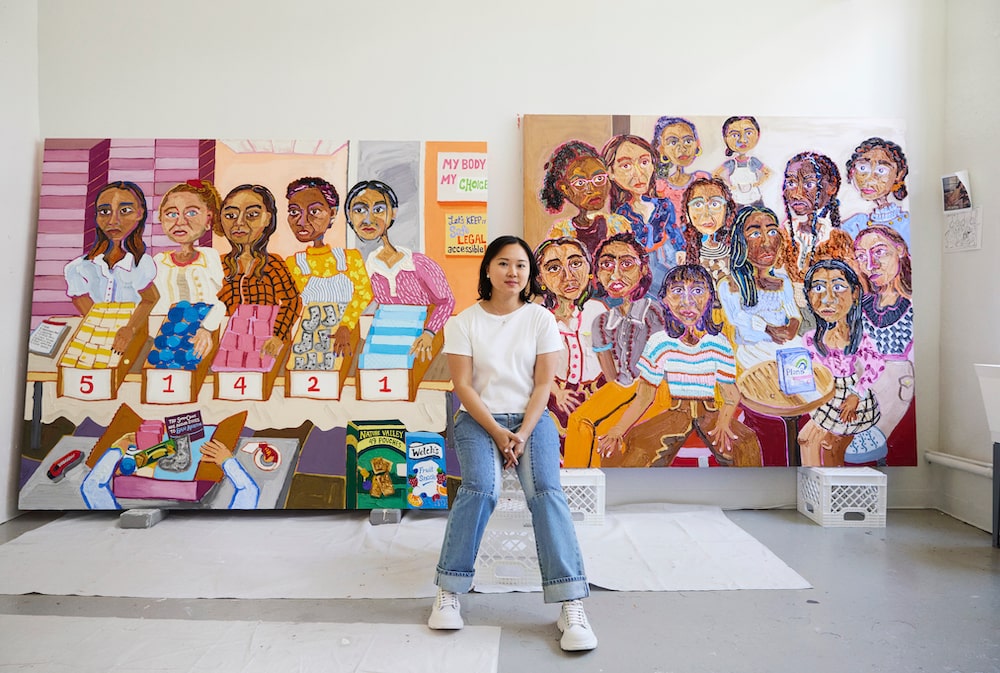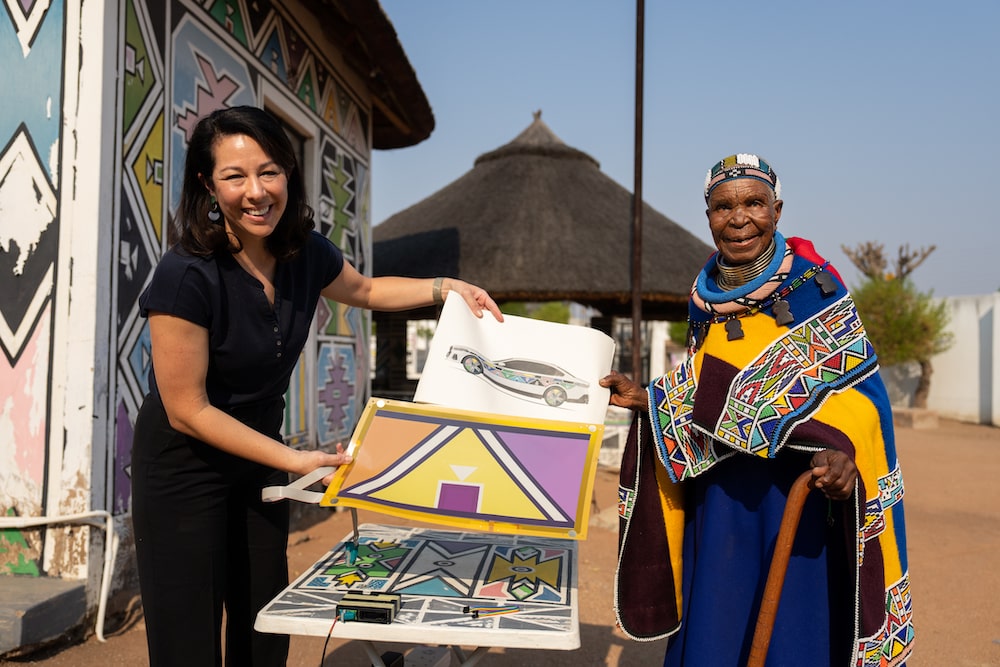A Landscape of Thought
Through July 28, Mitchell Anderson’s exhibition “Body and Blood” can be seen at Galerie Maria Bernheim in Zurich, Switzerland. Presented as a landscape of the artist’s own imagination, it features compilations of readymade objects placed around the space unassumingly, accompanied by more obvious artworks of encaustic and embroidery. All, which Anderson stated in the exhibition text, are mostly concerned with ideas of patterning, coding, and cannibalism.
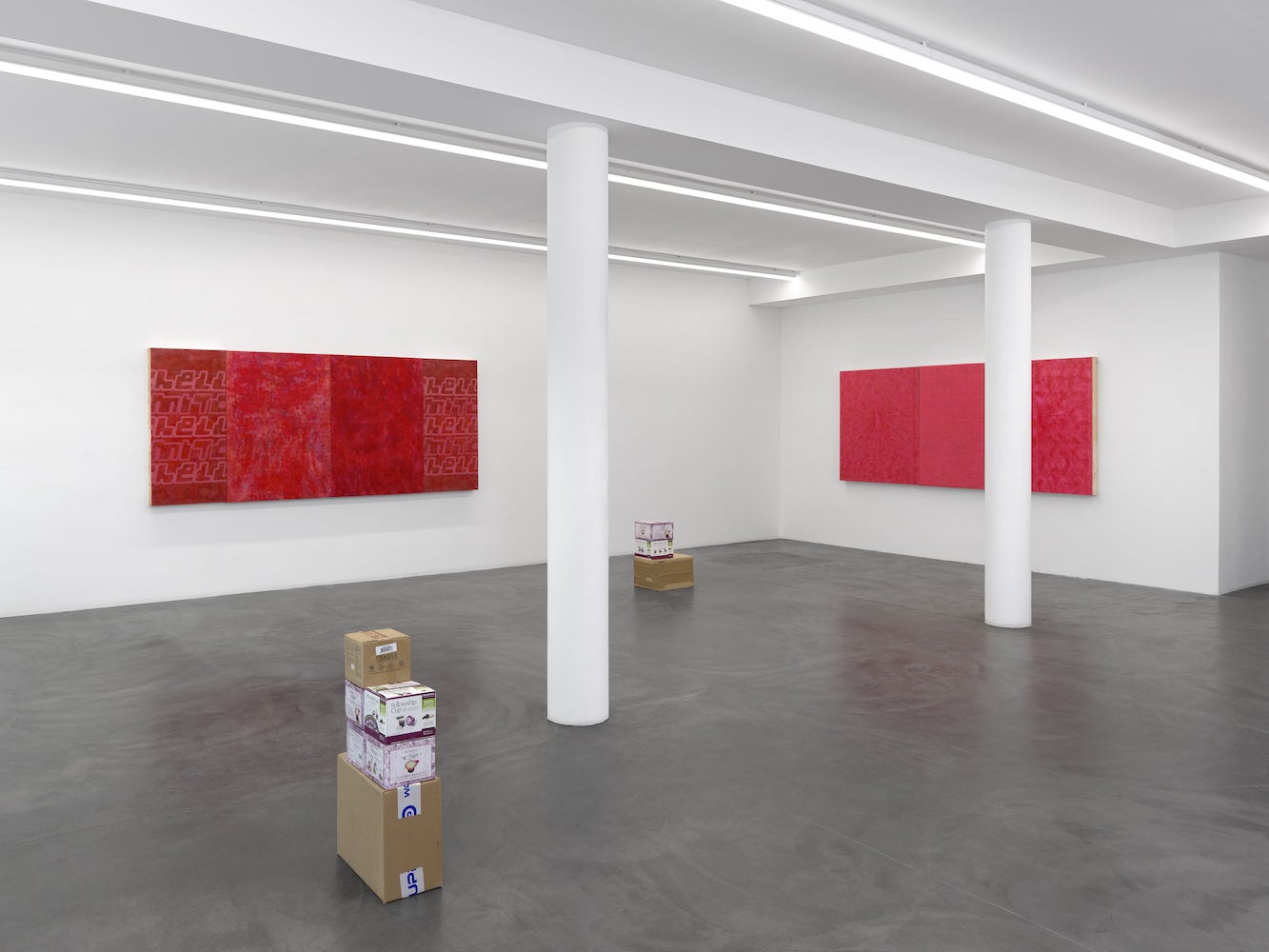 Mitchell Anderson, installation view, “Body and Blood,” courtesy of the artist and Galerie Maria Bernheim.
Mitchell Anderson, installation view, “Body and Blood,” courtesy of the artist and Galerie Maria Bernheim.
Reappropriating the Appropriated
Inspired by Andy Warhol’s 1979 Retrospectives and Reversals series, in which the icon re-appropriated subject matter previously appropriated by himself, Anderson’s artworks came into focus through a similar approach. Taking imagery and patterns made recognizable by prominent and influential artists, Anderson described his own works as “easter eggs” that forgo the appropriated subject matter and allude to their origins. For instance, jokes made famous by Richard Prince were abstracted and boiled down to their essences, appearing in large, repeating motifs. Anderson also references the artist Michel Majerus, noting that their names are similar in form, with the difference of just two letters.
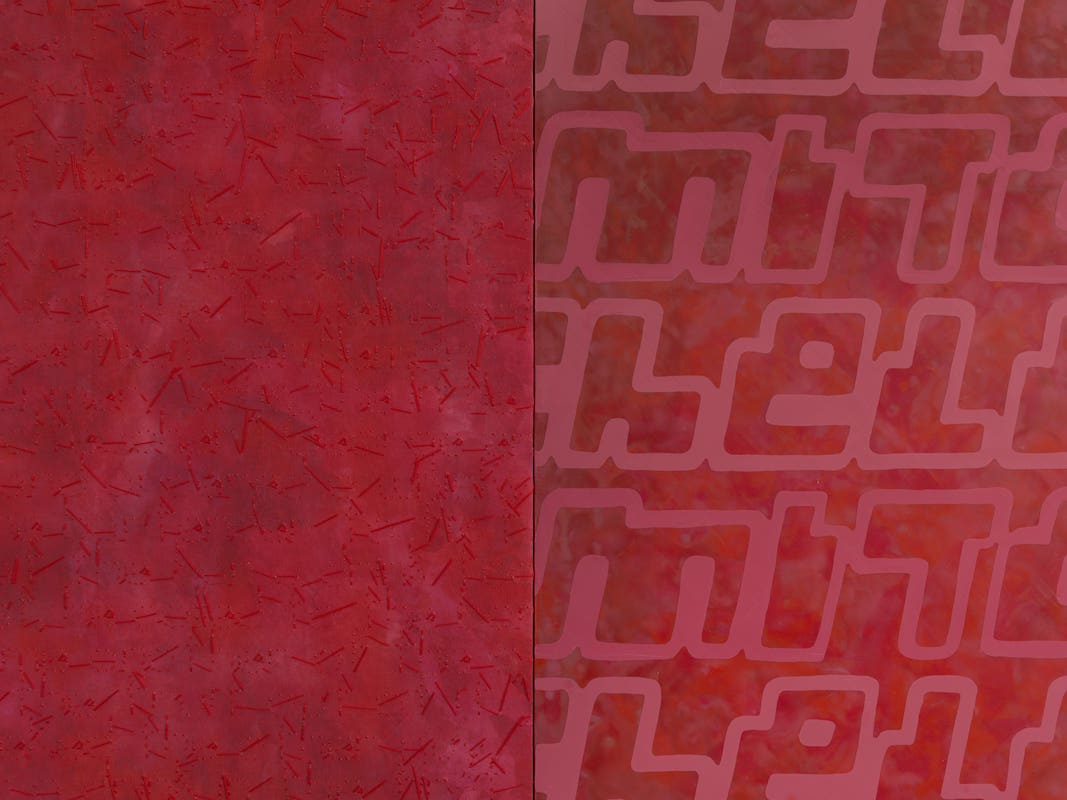 Mitchell Anderson, “Jokes and Names (Chez ma soeur)” (detail), 2023, Encaustic on panel, hand embroidery and gouache on raw, canvas on panel (in four parts), 47 1/4 x 111 3/4 inches; courtesy of the artist and Galerie Maria Bernheim.
Mitchell Anderson, “Jokes and Names (Chez ma soeur)” (detail), 2023, Encaustic on panel, hand embroidery and gouache on raw, canvas on panel (in four parts), 47 1/4 x 111 3/4 inches; courtesy of the artist and Galerie Maria Bernheim.
Within the gallery, visitors will find Anderson’s wall-hanging triptychs and polyptychs to be the first thing to catch the eye. The combinations of finely-embroidered threads and planes of encaustic exist in a gripping blood-red hue, their monochrome patterns—shapes, starbursts, and lettering that reads “Mitchell” in a muted coding font—waiting to be decoded by onlookers. Meanwhile, objects on the floor appear in the original packaging (like instant coffee pods, labeled boxes, and funeral home flower display stands) become immortalized as art, with their mere presence representing the re-appropriation Anderson suggests.
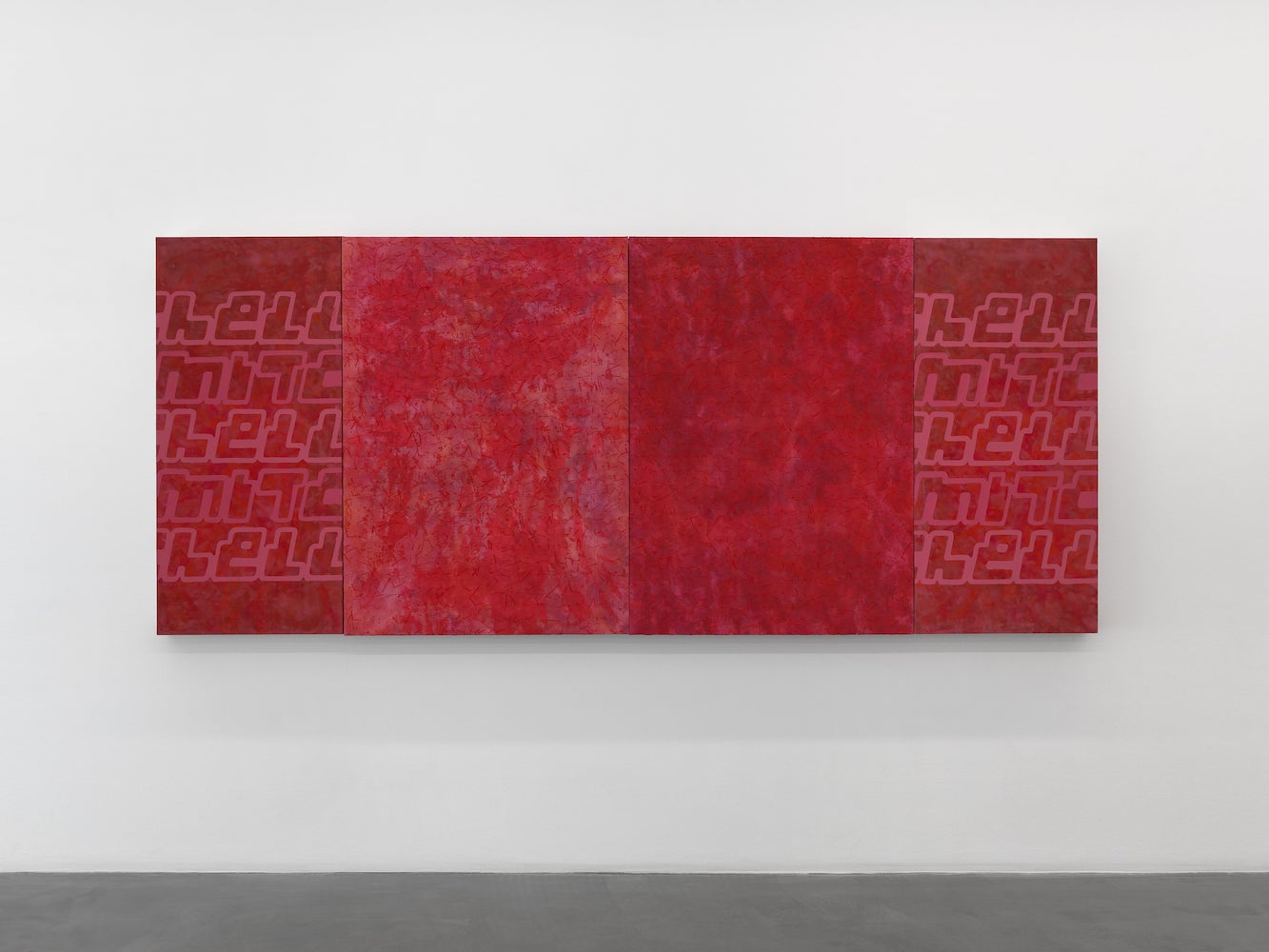 Mitchell Anderson, “Jokes and Names (Chez ma soeur),” 2023, Encaustic on panel, hand embroidery and gouache on raw, canvas on panel (in four parts), 47 1/4 x 111 3/4 inches; courtesy of the artist and Galerie Maria Bernheim.
Mitchell Anderson, “Jokes and Names (Chez ma soeur),” 2023, Encaustic on panel, hand embroidery and gouache on raw, canvas on panel (in four parts), 47 1/4 x 111 3/4 inches; courtesy of the artist and Galerie Maria Bernheim.
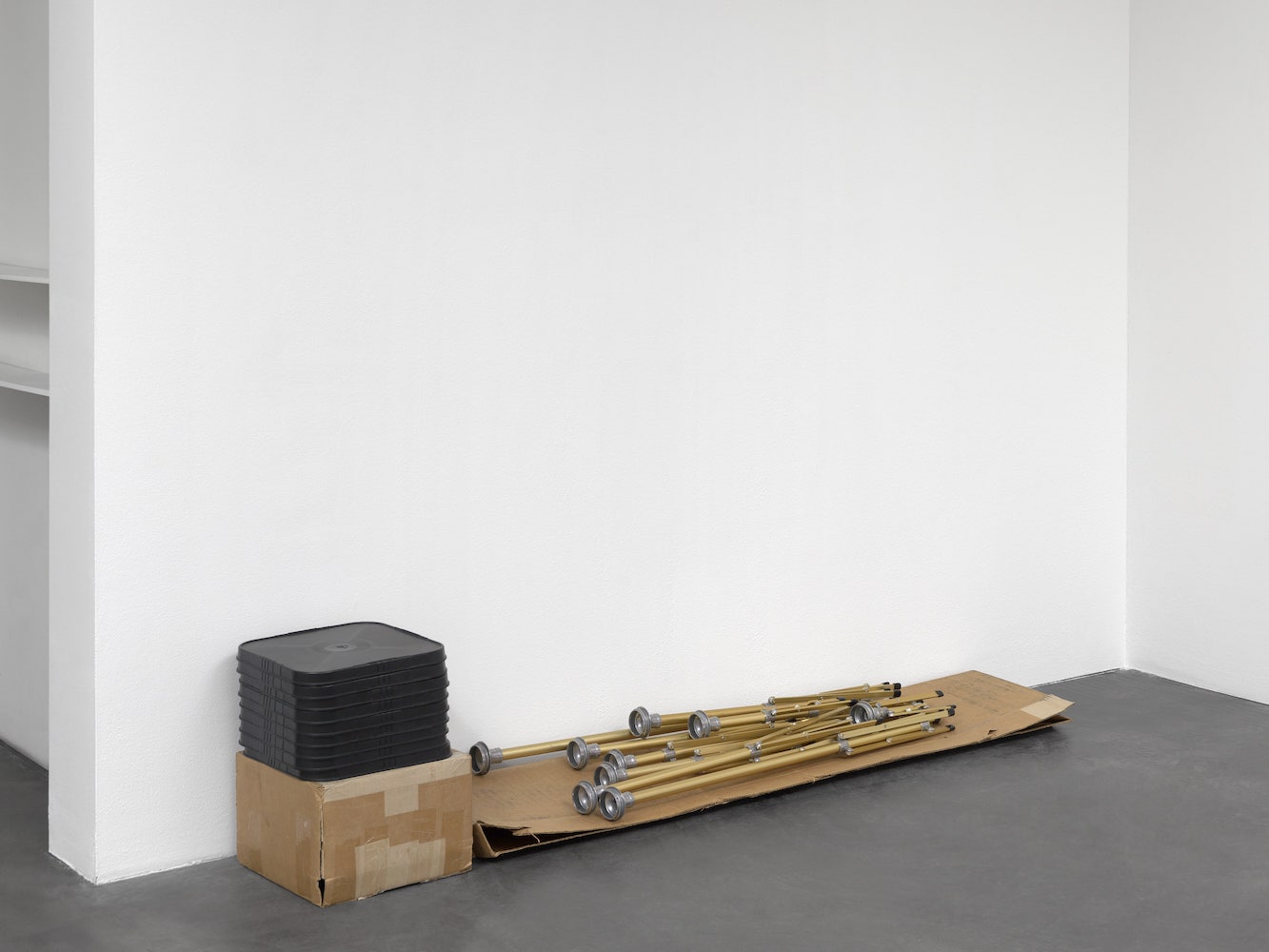 Mitchell Anderson,
“Pleurants,” 2023, Funerary flower display stands, packaging as shipped, 16 3/8 x 76 3/4 x 15 inches; courtesy of the artist and Galerie Maria Bernheim.
Mitchell Anderson,
“Pleurants,” 2023, Funerary flower display stands, packaging as shipped, 16 3/8 x 76 3/4 x 15 inches; courtesy of the artist and Galerie Maria Bernheim.







